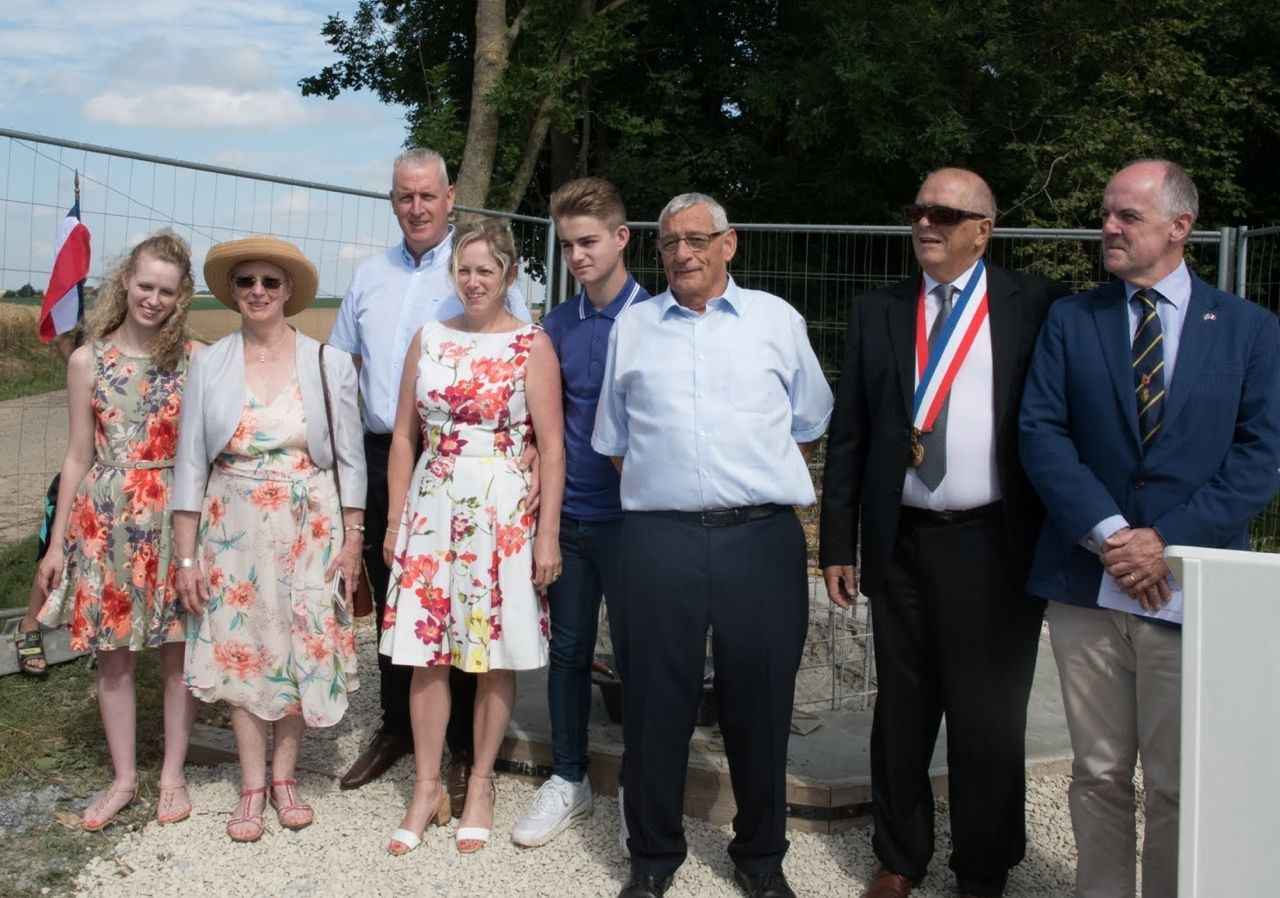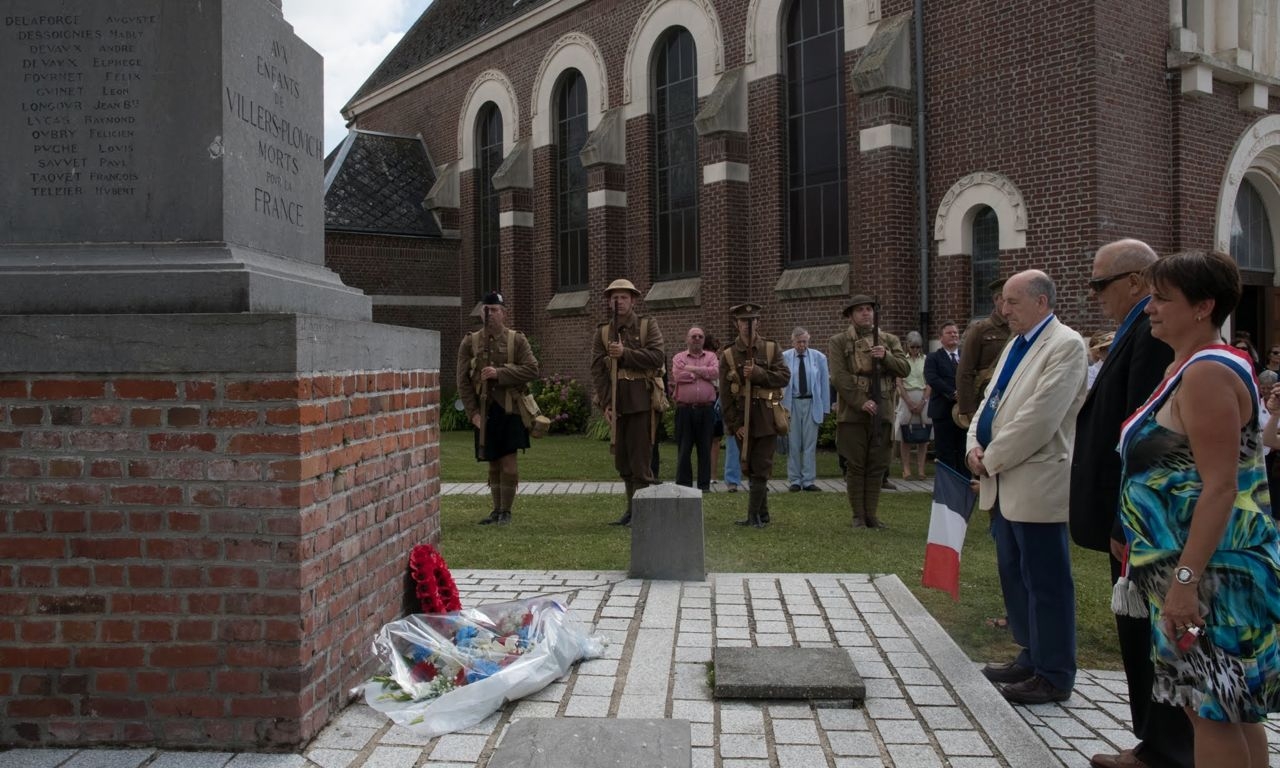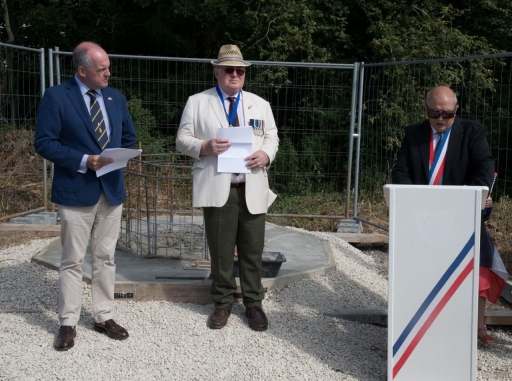A delegation from Wandsworth Council has visited Villers Plouich – a French village ‘adopted’ by the London borough after the Great War – to commemorate the centenary of Corporal Edward Foster being awarded the Victoria Cross. Foster, who was from south London, received Britain’s highest award for gallantry for his actions during an advance on the Hindenburg Line in April 1917. His deeds forged strong ties between Wandsworth and Villers Plouich that continue to this day. Evelyn McDermott tells the story.
One hundred years on Corporal Edward Foster VC remains an important part of local history in South London, and particularly in Wandsworth. He was a large and imposing man, attracting the moniker ‘Tiny’.
Until 24th April 1917 he was considered a competent but unassuming leader of his small group of men in the 13th (Service) Battalion, East Surrey Regiment. All this changed when his battalion, as part of the 120th Brigade of the 40th Division (XV Corps), moved to the hamlet of Beaucamp in preparation for liberating the village of Villers Plouich in front of the Hindenburg Line.
Citation
Corporal Foster saw that heavy fire from two entrenched enemy guns was restricting the advance. The citation for his Victoria Cross states that ‘with reckless courage (he) rushed forward…recovering one of the guns. Then, getting his two (Lewis) guns into action he killed the enemy gun team and captured their guns, thereby enabling the advance to continue successfully.’
The battle for control of the village, near Cambrai, raged between April and September 1917, with five officers and 87 men of the 13th Battalion killed.
Corporal Foster’s bravery was well recognised. After the First World War, he received other honours including the Medaille Militaire from France. He was re-employed and promoted by Wandsworth Council with the title ‘Dusting Inspector’ and he lived with his family locally until his death in 1946.
 Some of Edward Foster’s descendants at his memorial site with Villers Plouich Mayor Raymond Machut and historian Paul McCue (Photo © Evelyn McDermott)
Some of Edward Foster’s descendants at his memorial site with Villers Plouich Mayor Raymond Machut and historian Paul McCue (Photo © Evelyn McDermott)
In historical terms, it is noteworthy that Edward Foster was a member of a ‘Pals’ regiment made up largely of local men and raised specifically for the war. The 13th Battalion was mainly raised through the exertions of Lieutenant Colonel Sir Archibald Dawnay, the then Mayor of Wandsworth. The Battalion saw action in the Somme and suffered heavy casualties at the Battle of the Lys. It was disbanded in 1918. More than 50 soldiers rest in cemeteries local to Villers Plouich.
After the Great War: On Michaelmas Day 1920, Wandsworth Borough Council informally adopted Villers Plouich. The village had been extensively damaged and funds from Wandsworth raised locally helped rebuild it, including its small but elegant Mairie. In return the village named a square ‘Place De Wandsworth’.
The links were revived in 1995 on VE day when the Mayor Councillor Beryl Jeffrey organised a trip and foundations were laid for a new town hall. Sadly, Beryl Jeffrey died this year just a few weeks before the current visit which she had hoped to attend.
The memorial ceremony – 8 July 2017 On the ridge near Villers Plouich where Corporal Foster attacked the enemy position and captured their guns, wreaths were laid by Councillor Leslie McDonnell, a former Mayor of Wandsworth and Raymond Machut, Mayor of Villers Plouich. A seven-metre column is currently under construction as a memorial, and a time capsule of each Mayor’s speech was buried at its future base on the day. There was also a march past by re-enactors in WW1 military uniforms.

Remembering the French war dead of Villers Plouich (Photo: Centenary News)
The Wandsworth group was led by Cllr Major Leslie McDonnell and Cabinet member Councillor Guy Senior. It included military historian Paul McCue, author of Wandsworth & Battersea Battalions in the Great War.
© Evelyn McDermott & Centenary News
Images © Centenary News
